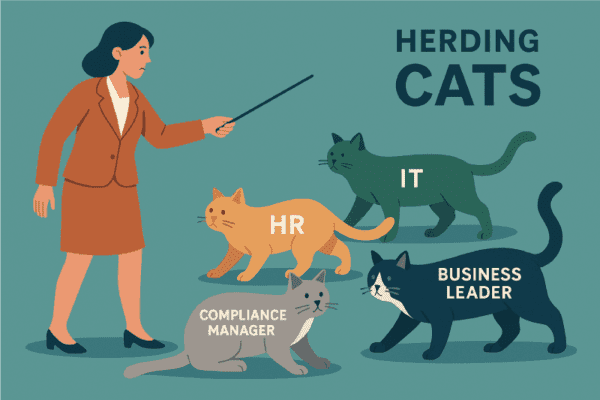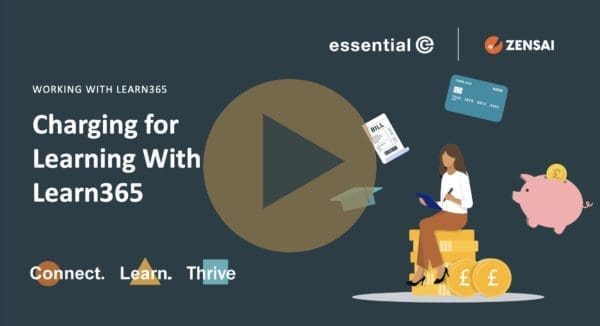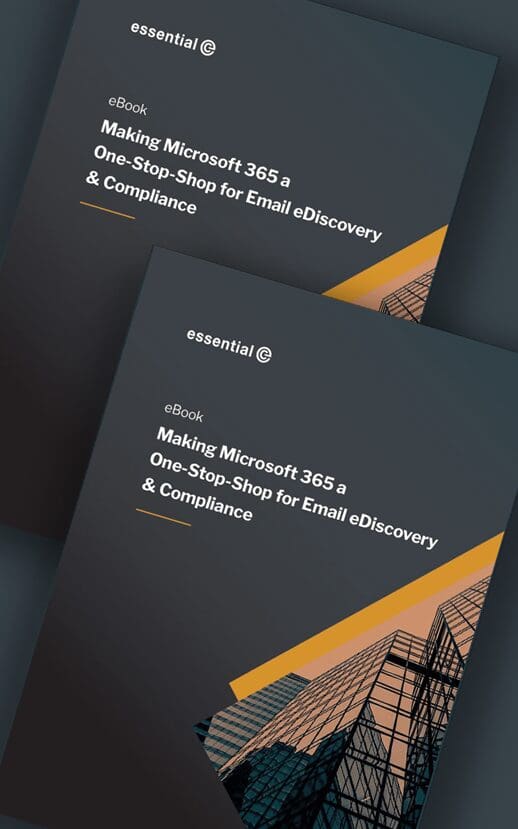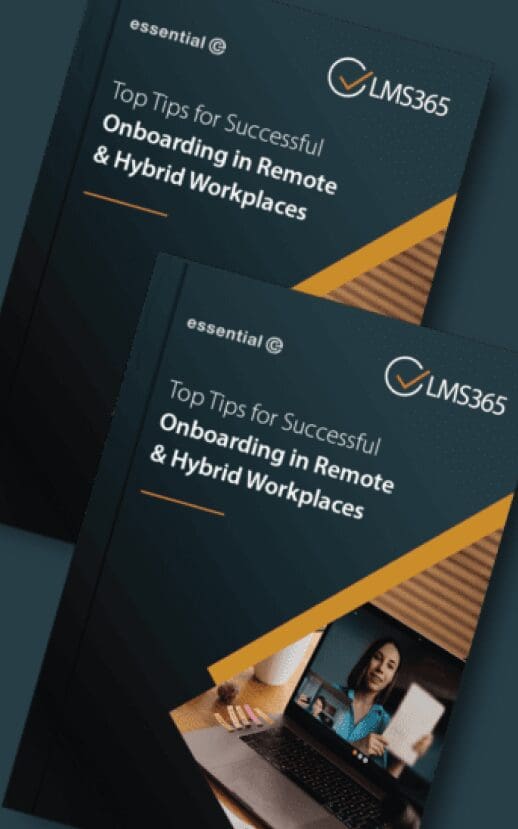Learning Management
How to Get Stakeholder Buy-In for Your LMS Selection
A Learning Management System (LMS) is an important investment and inevitably the right solution needs to tick quite a few boxes:
- Does it deliver overall value for the organisation? Yep!
- Can it support compliance learning? Of course.
- Alignment with HR strategy? Hmm, just about.
- Meet IT’s long checklist of requirements covering security, integration and more? Er, I think so…
- What about legal and regulatory stuff? Well…
While Learning & Development (L&D) managers will be responsible for rolling out an LMS and are effectively in the driving seat, the reality is that they will need to get buy-in from several different business stakeholders. This is to not only get a ‘green light’ for procurement, but then also to guarantee a smooth and successful roll-out.
One of the challenges we see with the organisations we work with when it comes to getting sign-off for a learning platform is that business stakeholders have different priorities and views, not all of which may be aligned.
The HR team prefer ‘solution X’ because it integrates with an existing application like SuccessFactors, but the IT team wants ‘solution Y’ because it has robust security that matches in with existing infrastructure and identity management policies. The analogy of herding cats springs to mind.

Managing Stakeholders and Building Consensus
To get momentum, L&D teams often need to manage various stakeholders to build consensus, particularly across IT, HR, and other business leaders. Without this buy-in there is always the risk that someone feels sidelined, causing implementation to be delayed or blocked, or the LMS being underutilised once it has launched.

Bringing multiple different stakeholders to ‘back’ one LMS is not always straightforward. Organisational silos, office politics, and uninformed or heavily influenced (see conclusion) views can all put a spanner in the works.
Additionally, not all L&D managers have established close relationships across support functions. For example, an L&D and IT team might not be quite on the same wavelength.
At Essential we’ve often found ourselves facilitating a conversation between L&D and IT to address specific concerns, create a common understanding and build bridges.
But L&D teams can go a long way to getting consensus by:
- Considering what the LMS should deliver from each stakeholder’s point of view
- Anticipating questions in advance to hold fruitful conversations that avoid misunderstandings
- Engaging in informed dialogue that achieves consensus more quickly.
In this next section I’d like to dig into the views of three main stakeholders – IT, HR, and Business Leaders – and what they’re going to want to know about your LMS. Note that within the ‘IT view’ we’ve also covered aspects which might be covered by a legal or compliance team.
What the IT Department Needs to Hear
So, you’ve booked a one-on-one with your CIO or Head of IT. Ready to have that chat about the LMS?
What Security Model Does it Use?
Any LMS must be able to comply with an organisation’s security policies. Security is a must-tick-every-box dealbreaker, with little room for compromise. An LMS may need to:
- Support multi factor-authentication
- Have granular permissions to underpin ‘Principle of Least Privilege’
- Undergo rounds of penetration testing
- Be produced by an ISO 27001 certified vendor
- Pass your technology due-diligence checklist.
Exactly HOW does it Integrate with Microsoft 365?
IT teams that invest in Microsoft 365 invariably want to implement products that integrate with Microsoft 365. While many LMS’s might link from your intranet and support single sign-on, this is quite a superficial linkage.
If Microsoft 365 is your chosen platform then a deeper integration offers more benefits to all stakeholders.
For example, Learn365 which was developed ‘from the ground up’ for Microsoft 365 will automatically meet security requirements, be easier and cheaper to implement and manage, and require no learning curve for IT admins and support teams. There’s many benefits to end users of the system which are essential for ensuring good engagement and adoption.
A learning platform that truly integrates with Microsoft 365 also has advantages in supporting IT strategic aims that:
- Focus on creating a more integrated digital experience with access through Team
- Seek more ROI from Microsoft 365
- Can leverage Entra ID profiles
- Enabling Power BI for reporting
- Can integrate with Microsoft Copilot
- and more!
Tell your IT manager what they need to hear…

Where’s the Learning Data Stored – and Who Owns It?
IT stakeholders – and quite possibly your legal or compliance function – will need clarity on where data is stored and the jurisdiction that data centre falls under for compliance reasons.
For UK businesses these generally need to be in the UK or the EU. They’ll also want to ensure that there is clarity on who owns the data reflected in any contractual small print.
For example, the LMS we work with (Learn365) ticks both boxes in that the customer always owns all their own data, and all data can be held in the customer’s region of choice.
How Much Input will You Need from the IT Team to Implement It?
IT leaders will want to know that the implementation is not going to be a significant drain on their resources, not only in terms of the set-up but also in ongoing support.
With Learn365, for example, most of the effort in set-up lies with the L&D team and with an implementation partner such as Essential, rather than the IT function. We also cover ongoing support.
Will it Support IT-Related Learning ?
IT leaders also will want a solution that can help deliver IT-related learning, for example on how to use Microsoft 365 applications and to improve cybersecurity awareness and AI skills.
What HR Needs to Hear
Now it’s time to see the Head of HR. Sometimes the L&D team may be part of the wider HR function, but HR leaders will still want to ensure that any LMS aligns with HR strategy and contributes towards wider objectives.
Will it Improve our Employee Experience & Improve Retention?
An LMS can contribute to the employee experience by offering learning opportunities and strengthening and formalising internal career development. Features like learning and career pathways can provide structure and clarity. HR leaders (and business leaders too), want to see a learning platform that provides a tangible contribution to employee engagement and even reduced employee turnover.
How Will it Fit in With Our HR Processes?
Training and learning must not be isolated from key HR processes such as onboarding and annual performance reviews. The best way to optimise processes is to ensure that the LMS will integrate seamlessly with your HR systems. If the LMS can actually enable, streamline and improve processes, then that is going to be a big tick.
For example, we’ve found that Learn365 is often a key enabler for organisation-wide training programmes.
What will Guarantee It’ll Get Used?
HR leaders will want to know that a system is going to be well adopted and will engage learners, particularly if they may ultimately be responsible for it.
Emphasising any features that reduce barriers to adoption such as offering a great use experience and being very easy and convenient to access ‘in the line of work’.
For example, the ability to access learning directly through Microsoft Teams means there’s no separate system to switch into.

Can It Help Map Skills and Develop Future Talent?
Current skills shortages and the need to upskill staff to drive opportunities around AI are just two of the reasons why some businesses are taking a more strategic view of managing skills. We see a lot of HR leaders wanting solutions to help map skills-related learning and support skills planning.
Robust reporting on an LMS can also help take a more strategic view of workforce development and enablement. We’ve found HR stakeholders like the fact that you can integrate Learn365 data into a Power BI dashboard that might bring in other HR data to deliver a 360 view.
Will It Be Easy to for Our Team to Use?
HR teams tend to want to avoid solutions that are overly technical. HR leaders want to know an LMS is easy to use and simple to manage for the HR team, as well as being intuitive for learners or for course administrators. They want to avoid providing technical support or lots of handholding. They also want to reduce admin time and minimise manual effort usually related to reporting, sending out notifications and monitoring compliance, and I don’t blame them.
Is The Learning Platform Truly Inclusive?
Some stakeholders – most likely in HR – will focus on ensuring the chosen learning platform supports neurodivergent and disabled employees. For them, accessibility isn’t just a compliance requirement — it’s about inclusion and equity. They’ll want reassurance that the LMS meets WCAG and accessibility standards, supports assistive technologies like screen readers, offers captioning and alternative text, and provides flexibility in how content is presented and consumed. For example, offering video as well as written content. Demonstrating that your chosen solution helps remove barriers to learning and enables everyone to participate fully will go a long way in securing their confidence and support.
Will it Grow With Us?
It’s only natural to want assurances that any investment will be a long-term one, rather than a point solution.
Other areas you should expect your LMS to support include professional development frameworks, coaching and mentoring programmes, skills mapping and succession planning and external learning delivery where training can be offered or sold to partners, clients, or the public.
What Business Leaders Need to Hear
An LMS is a significant and strategic investment that contributes positively to multiple different aspects of organisational life. Business leaders will be asking how.
Can We Use it to Underpin What We’re Doing as a Business?
If you can demonstrate how an LMS supports wider business goals – and specific company initiatives – then you have every chance of business leader buy-in. For example, an LMS can contribute to:
- Digital transformation, with the LMS an important part of the jigsaw to support employee enablement
- AI adoption and readiness, delivering targeted learning and knowledge sharing around a critical business priority
- Building a one company culture – supporting companies seeking to develop a more unified company culture, for example through a unified onboarding programme
- Supporting a culture of continuous learning that supports both employee enablement and engagement
- Reducing risk by training employees on critical regulatory, compliance and security topics such as cybersecurity. The associated reporting also means teams are better prepared for any regulatory or certification audit. Risk reduction is sometimes the central pillar of any associated business case for the learning platform.
Can It Improve Productivity and Performance?
CEOs and business leaders across different divisions will always want to see increased productivity and improved performance, especially in a challenging business environment. Always emphasise the different ways a well-adopted LMS can support this through an upskilled workforce, better knowledge, faster onboarding so new starters can hit the ground running, and smoother compliance, with fewer diversions and distractions.
Employee Experience & Improved Retention
As with HR leaders, business leaders will want to see an LMS contribute to an uptick in employee retention and improved employee experience, especially for new starts. People new to the company can easily feel neglected and ‘unsupported’ – especially if they – or their co-workers and mentors – are working remotely.
Five Practical Tips for Winning Stakeholders Over
- Never forget the WIIFM factor: Keep the What’s In It For Me? principle front of mind. A learning platform like Learn365 delivers value to every stakeholder – HR gains better visibility and integration, IT benefits from Microsoft-aligned security and manageability, the Compliance team sees improved audit trails and reporting, and business leaders get measurable insights into workforce development. Make sure each group can clearly see how the solution supports their goals as well as the organisation’s wider learning strategy.
- Bring your answers: Do your homework. Prepare responses to common questions – and potential objections – from all key stakeholders. Target presentations accordingly if you’re making a business case.
- Start an early dialogue: Engage early to prepare the ground and make it an ongoing conversation. It will result in better stakeholder engagement – and ultimately a better implementation.
- Use pilots: Allowing each function to run a pilot can really help allay any fears and also help prepare for a smoother implementation. Consider running a smaller scale pilot for a department, then expanding out once teams have confidence in all the key elements. Or alternatively, arrange demos for the different stakeholders. This is something we often do, to dive into the specific aspects each department has questions about.
- Demonstrate ROI: Ultimately, it’s always going to be critical to demonstrate the ROI of any LMS. Cover areas such as:
- Ensuring your company policies are properly ‘pushed out’ and ‘read and understood’,
- Brushing up on critical skills like working well with AI tools or spotting cybersecurity risks,
- Fast-tracking new-starts,
- Reducing the admin involved in ensuring annual certifications are up to date, and
- Improving staff retention.
Conclusion
An LMS is not just an L&D project, it’s something much wider that helps achieve goals at both the organisational and functional level.
The ideal starting point to drive widespread adoption and maximum value is to ensure that your learning platform is going to meet all your stakeholder’s goals so that:
- Everyone feels a sense of ownership.
- All stakeholders work together to drive a successful roll-out.
- Your LMS adoption is stronger.
- You achieve faster ROI with your LMS.
And our final watchword is to be wary of having too many boxes to tick.
As well as the needs of different stakeholders, it’s very easy to get caught up in the endless lists of ‘must-have’ features – especially those that have been influenced by prospective LMS vendors in the obligatory ‘what to look for in…’ guides.
The key is to focus on the outcomes your organisation actually needs to deliver, support and get value out of its LMS. Ultimately a leaner, well-aligned solution is far more valuable than one overflowing with unused or unnecessary features. As testament to this – many of our customers demanded that AI was embedded in their LMS, but very few are actively using the AI features.
And when that happens, everyone’s happy – or at least as happy as they can be. After all, it’s software, not a magic wand.

Discover the Learning Management Solution built on Microsoft 365
See for yourself the power of delivering learning from within Teams and SharePoint.



















